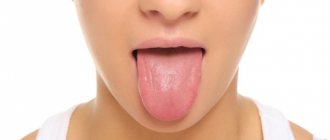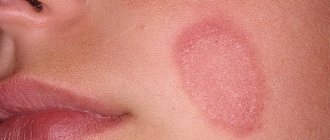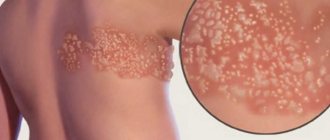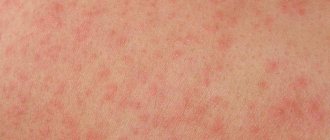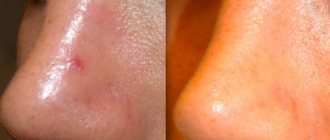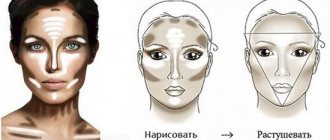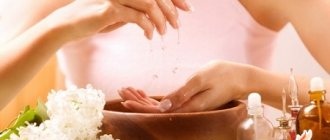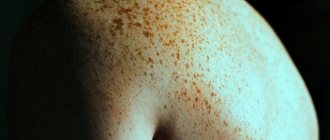Shingles is a common human viral disease caused by the Varicella zoster virus. This virus is a common causative agent of diseases such as chickenpox and herpes zoster. Infection occurs by airborne droplets. The virus enters the human body through the cell membrane and affects the peripheral and central nervous system.
In the human body, the virus is in a latent state and is activated in the presence of diseases and conditions associated with the development of immunodeficiency. Immunological reactivity is reduced under the influence of the following factors:
- reactivation of chronic disease;
- treatment with immunosuppressants;
- central nervous system intoxication;
- the presence of a hidden infection.
The stability of the virus in the external environment is low and is destroyed under the influence of high temperature, UV rays and antiseptic drugs. The Varicella zoster virus is highly resistant to negative air temperatures. The incubation period of ophthalmoherpes from the moment of infection to its manifestation can be several years.
Ophthalmic herpes zoster in HIV-positive individuals and individuals with cancer often develops into a severe form of the disease. Herpes zoster in severe form is accompanied by the formation of ulcerations and gangrenous foci in the affected areas.
Shingles is often seen in people who have undergone radiotherapy and treatment with corticosteroid drugs. It often occurs in elderly people with weakened immune systems and those suffering from severe forms of diseases such as leukemia, mycosis, and Kaposi's sarcoma.
Attention! Dermatologists and ophthalmologists note that 5-6 days before the rash appears, patients experience neuralgic symptoms such as burning, tingling, twitching in the area of the future affected area with herpes.
The herpes zoster virus attacks the fibers of the trigeminal nerve. When the orbital nerve is damaged, an inflammatory process of the skin is observed:
- upper and lower eyelids;
- forehead areas;
- dorsum of the nose;
- parietal zone.
When the maxillary nerve is damaged, the lower eyelid is affected. In severe cases of the disease, damage to the orbital and maxillary nerves is observed. In such cases, the inflammatory process spreads to the cornea and iris of the eye.
What to do if the rash does not go away for a long time?
If deprivation lasts for a long time, the child should be shown to a specialist.
The doctor will help you choose the right medications and rule out a bacterial infection. If you recognize lichen, then try to follow the recommendations of doctors:
- Avoid contact with water. This is unpleasant, but fungal types of lichen do not tolerate water, 1 hot bath will cause the number of spots to increase several times.
- Try not to scratch the skin; if the itching is unbearable, then take Loratadine, Claritin or other drugs that have an antihistamine effect.
- Wear underwear and clothes made from natural fabrics, as they absorb sweat well. The latter also has a negative effect on lichen.
- Avoid direct sunlight, forget about tanning and solarium for a while, with the exception of diagnosed tinea versicolor.
Important! Do not use iodine, brilliant green, or alcohol. These drugs have an irritating effect, slow down treatment, acting on the symptom, and not on the causative agent of the disease. They are not able to defeat lichen.
How are skin diseases related to nerves?
The human central nervous system is a stable, but at the same time very complex, self-sufficient mechanism. It activates the compensatory process that characterizes the body’s protective functions, that is, immunity. The reasons for system failure may be:
- stressful conditions;
- prolonged depression;
- forced lifestyle changes;
- climate change;
- exacerbation of chronic diseases, etc.
When the body cannot cope with a large nervous load, suitable conditions are created for the development of any disease. A person experiences an imbalance between psycho-emotional factors and protective properties, as a result of which the immune system suffers. Immune cells get out of control, active synthesis of antigens to false allergic stimuli begins, and resistance deteriorates. As a result, the risk of developing dermatoses increases. Among all the possible causes of skin diseases, neurogenic one occupies one of the leading places. In the crazy rhythm of modern life, lichen is increasingly occurring due to nervousness.
During diagnosis, accompanying symptoms are taken into account. If sleep disturbances, constant restlessness, anxiety, lack of resistance to stress or obsessive fear are observed, doctors have good reason to believe that lichen is caused by unhealthy nerves. An important factor is also a significant decrease in immunity due to stress. This increases the risk of infection with viral and fungal infections, which are the causative agents of many types of lichen.
Types of lichen on the face
There are several types of lichen that appear only on the face; they differ not only in the shape and nature of the rash on the face, but also in their origin, which means there is a different course and treatment.
Let's look at the most common types:
- Ringworm or eczema
- Shingles - caused by fungi or infections
- Pityriasis versicolor/pityriasis versicolor (solar) - caused by various fungi
- Pityriasis rosea (pityriasis) – an allergic reaction, less often a viral infection
- Lichen planus is a disease caused by viruses, a predisposition sometimes as an allergic reaction
- Psoriasis or scaly lichen - infectious origin
- Ringworm is a disease caused by several types of fungi.
Each type has its own treatment, but some have similar symptoms, and it is difficult for a person without medical education to distinguish a rash of herpes zoster from psoriasis papules, and these types of treatment require completely different things, so it is very important to correctly diagnose the type of shingles.
Ringworm for stress
In the human body, everything is interconnected, so a dermatological disease often occurs - lichen due to nervousness.
This disease is characterized by the appearance of a rash on the skin in the form of watery blisters, crusts, small scales or spots. There are different types of lichen, but each of them is contagious.
Therefore, observing signs of lichen rash, the patient should consult a doctor and undergo a diagnostic examination.
Symptoms of lichen
Various symptoms, which are different for each subtype of lichen, can indicate the development of an infectious skin disease against the background of severe stress. The table shows the main signs by which lichen can be distinguished:
| Variety | Signs |
| girdling | Nausea |
| Painful feeling of cold and itching | |
| Increase in body temperature to high levels | |
| Distribution of small blisters filled with clear fluid mainly between the ribs | |
| Localization of lesions in an asymmetric order | |
| Pityriasis | Spots of pink, yellow, whitish or brown color with pronounced flaking |
| Localization - torso, neck | |
| Round shape with jagged edges of varying sizes | |
| Pink | Increased body temperature |
| Pink rashes with clear and bright borders | |
| Joint pain | |
| Weakness, decreased heart rate | |
| Red flat | Feelings of intense itching |
| Peeling rash | |
| Irregular rashes with a shiny top layer | |
| Destruction of the nail plate | |
| Shearer | Hair fragility, plaque and pustules on the scalp |
| Pink spots with a white center on the area of the body in contact with the fungal outbreak | |
| Severe itching of spots |
Reasons for deprivation
One of the reasons for the appearance of lichen is infection with pathogenic fungi.
Various factors can provoke a lichen rash, the main ones being the following:
- infection by pathogenic fungi;
- infection with a virus that appears after a cold or hypothermia;
- allergic disease;
- suffered stress;
- weak immune system;
- exposure to harmful substances on the skin.
Why does lichen occur on nerves?
One of the most common reasons that provoke the development of lichen is nervous disorders, in particular stress. Almost all dermatological problems arise as a result of a weakened nervous system, and lichen is no exception in this case.
Experiencing prolonged stress, a person is subject to overstrain of the nervous system, which leads to the spread of rashes and spots throughout the body. Due to damage to the skin, there may be a risk of infection, which can lead to serious complications.
Types of lichen susceptible to stress
Not all types of lichen rash arise from nerves; only a few types of this skin infectious disease are influenced by a psycho-emotional state. Thus, nerves can provoke lichen planus, which is characterized by damage to the dermis with a rash similar to nodules. The root cause of lichen planus is nervous disorders.
https://www.youtube.com/watch?v=piDbAHz8jqg
A connection has been made between stress and the appearance of shingles on the body. The provoking factor is the herpes virus, which is activated due to severe stress.
Herpes zoster in humans is localized mainly in the intercostal region, but it also occurs in other parts of the body where there are large nerve trunks. This type of lichen is dangerous due to the development of the ocular form, in which there is a risk of loss of vision.
Therefore, noticing the first symptoms of a skin disease, you should immediately begin treatment and eliminate the main cause of its occurrence.
This infectious-allergic disease is characterized by spotty rashes.
Often, due to stress, pityriasis rosea occurs, which is often localized on the chest and gradually spreads to the abdomen to the inguinal folds. Pityriasis rosea appears most rarely on the face. By its nature, this type of lichen is contagious, but may not be transmitted to a person who is in the same room with the patient.
How is the problem treated?
Stress lichen requires an integrated approach, which includes measures to eliminate the skin rash and normalize the psycho-emotional state, so treatment should be carried out by 2 specialists at once - a dermatologist and a neurologist.
First of all, the patient is prescribed sedative, antiseptic, anti-inflammatory and antihistamine medications. It is important to improve the functioning of the central nervous system, and Novo-Passit is well suited for this purpose, as well as well-known folk remedies: motherwort tincture, valerian.
Zovirax antiviral medications will help relieve itching and pain that accompany the lichen rash. "Valavir", "Acyclovir". Anti-inflammatory drugs, such as Nimesil, Ibuprofen, Paracetamol, are also included in the therapeutic course.
If the itching is too severe, then antihistamines will help relieve it:
- "Fenistil";
- "Citrine";
- "Suprastin";
- "Loratadine."
In the treatment of lichen, a special place is occupied by immunostimulants, which are necessary to enhance the immune system. When the body’s defenses are weakened, it is easier for lichen infection to penetrate the human body, so it is important to maintain immunity at the proper level and the drug Zostevir will help with this.
Source: https://EtoGribok.ru/lishaj/vajno/nervy.html
How to treat lichen planus
Lichen planus on the skin is eliminated using a variety of drugs. Doctors prescribe antiallergic and sedatives, medications containing calcium, and vitamin B.
Lichen planus can also be treated with antibiotics (for example, Penicillin). For external use, it is effective to use products with corticosteroids (Reaferon, Prednisolone).
Diazolin, Diphenhydramine, Pipolfen are used as antihistamines for treating facial skin.
Features of the treatment of somatic lichen
Treatment of lichen should be comprehensive:
- Taking medications: ointments with corticosteroids (to relieve inflammation and suppress infection), antimicrobial agents (if necessary), histamine blockers (eliminate itching, normalize sleep), immunostimulating agents. If you have mental disorders, you may need antidepressants, sedatives and other medications that correct the activity of the nervous system.
- Psychotherapy and lifestyle correction. It is important to monitor your diet, exercise, rest and get enough sleep, and undergo physical therapy. But it is even more important to deal with the traumas of the past.
For the treatment of psychosomatics, the patient’s involvement in the treatment process is important. He must realize that the problem lies in his thoughts, negative thinking, destructive beliefs, and mistakes. You need to rethink past situations and calm your mind. For healing, it is important to accept and love yourself, to change your perception of the world.
It is important! Before treatment, you need to undergo a full examination and diagnosis: visual examination, history taking, scraping analysis, general tests. You cannot treat lichen on your own! This can aggravate the course of the disease or transform the pathology into a chronic form.
How can you get infected?
Let's consider the options for infection with lichen:
- Ringworm can only be contracted if a child comes into contact with an infected person;
- Pink lichen is non-infectious. It can be contracted after hypothermia or after recovery from any viral infections when the immune system is weakened. The likelihood of becoming infected is higher in the spring and autumn months than in others;
- Shingles is especially contagious in children who have not had chickenpox;
- Pityriasis versicolor can be contracted through contact with an infected person or an item of personal hygiene;
- The original source of lichen planus has been identified. But dermatosis begins when the following factors coincide: Severe stress in the child;
- Chronic disease of the gastrointestinal tract;
- Allergy to medications;
- Contact with a person who is sick with dermatosis and hepatitis C at the same time;
- Problems in the oral mucosa;
- Sores on the body;
- Eczema appears due to the combination of two influencing factors - external and internal. External factors include such factors as skin damage, contact with allergens, and artificial feeding. Internal factors include genetics, kidney, gastrointestinal and liver problems, as well as chronic viral diseases;
- Scaly lichen is a non-contagious disease. It can occur in a child if the following factors are present in his life: Genetic heredity;
- Neurological problems;
- Metabolism is disrupted.
Types and varieties of lichen
There are many types and varieties of deprivation in humans, the most common include:
- simple (dry),
- fungal,
- viral (circular, wandering),
- black,
- tinea versicolor in humans,
- fungal,
- water,
- round,
- domestic,
- golden,
- subcutaneous.
Their classification was based on differences in characteristics, manifestations, treatment and duration of the course.
Simple (dry)
The dry form of streptoderma is called simple (dry) facial lichen. It appears as small pinkish round spots, which can be present not only on the face (by name), but also in the buttocks area and on the back. There are no disturbing symptoms, the patient’s health remains within normal limits. A few days after the onset of the disease, the spots increase in size and can merge into formations 3-4 cm in diameter.
Streptoderma
The treatment is standard, solar radiation helps a lot - patients are advised to deliberately expose the affected areas of the body and face to direct rays of the sun (a solarium is absolutely not suitable in this case). The spots of lichen simplex become distinctly pale, but after a few weeks the skin pigmentation is completely restored.
Fungal
Fungal lichen is the second name for the pityriasis type of the disease, which affects the stratum corneum of the epidermis. Most often it develops against the background of the following pathologies:
- lung diseases;
- problems in the gastrointestinal tract;
- disturbances in the functionality of the vascular system;
- endocrine diseases.
Pityriasis versicolor Spots
with pityriasis versicolor appear throughout the body, with the exception of the scalp and upper/lower extremities. In the first days they have a slight greenish tint, after a few days they become light brown.
Viral (lichen circles, lichen wandering in humans)
The viral type (circular, wandering) includes herpes zoster, the causative agent of which is the herpes virus. The spots are localized in the intercostal space, in the places where the nerve trunks pass. They are affected by the virus, irritated, and this causes severe pain.
According to statistics, viral lichen most often affects adults; in childhood it manifests itself in the form of chickenpox. This type of disease is characterized by rashes in the form of small blisters with liquid contents. They itch and hurt; a few days after they appear, they burst and crusts form in their place.
Shingles
Black
Pityriasis nigra is a fungal disease of a superficial nature. A distinctive feature of the disease is the formation of dark brown (almost black) spots on the palms and soles, on the surface of which there is no peeling. Most often diagnosed in residents of tropical countries.
Treatment of black lichen consists of isolating the patient from others, using ointments based on tar, sulfur and selenium.
Tinea nigricans
Ringworm in humans
Weeping lichen in humans is eczema, which is an inflammatory process that occurs in the upper layers of the skin. It worsens when eating sweets and chocolate. Eczema quickly transforms from acute to chronic form, so it needs to be fully treated with specific medications.
Eczema
It is important for recovery to remove irritating factors from the patient’s life - allergens - food, chemicals, decorative cosmetics.
Round
Lichen roundus is caused by a virus; according to statistics, this disease is diagnosed many times more often in women. Infection occurs in spring and autumn, when a provoking factor is present - hypothermia. The spots appear one at a time, spread throughout the body slowly, and are most often localized on the chest, stomach and back.
If there is no treatment, the spots grow, then merge into a single pathological focus.
Chronic lichen in humans
Any type of deprivation in a person can take a chronic form; it is provoked by non-compliance with personal hygiene, violation of the therapeutic course, interruption of treatment without confirmation of complete recovery. It is characterized by frequent exacerbations that occur against the background of:
- development of any internal pathologies;
- pregnancy;
- endocrine disorders;
- hypothermia;
- stress and depression.
This is due to decreased immunity. Chronic lichen in humans is difficult to treat, and complete recovery does not occur at all - it is only possible to put the disease into long-term remission.
Ringworm
Household lichen is usually called ordinary pink lichen, which is of viral origin. The frequency of diagnosis increases in autumn and spring, when people’s immunity is weakened and the body is affected by hypothermia, colds, and depression.
Pityriasis rosea
The course of the disease is favorable - even in the absence of treatment, the characteristic spots disappear after an average of 8 weeks. The spots peel, but do not itch. Treatment does not involve the use of anti-inflammatory or antimycotic drugs - they can provoke the spread of small rashes. Doctors recommend using only antiallergic drugs.
Lichen aureus
Lichen aureus is not contagious; at first the disease manifests itself as yellow dots around the hair follicles, which then increase in size and turn into pinkish spots with a yellow tint. If you scratch these spots a little, a large number of small scales form on the surface. The second name for pityriasis aureus is pityriasis versicolor.
Lichen aureus
Treatment begins with treating the stains with an alcohol solution of iodine - the surface immediately becomes dark brown, which is a diagnostic method for determining the type of lichen. Therapy involves the use of external antifungal drugs. Formed scales are removed with salicylic alcohol.
If the disease occurs in an already advanced form, then systemic antifungal drugs taken orally (inside) are additionally prescribed - Fluconazole, Intraconazole.
Subcutaneous lichen in humans
In humans, subcutaneous lichen resembles acne in its symptoms; it even occurs against the background of existing foci of inflammation, acne, and blackheads. It is caused by a subcutaneous mite, does not respond to classical treatment and can worsen over the years and go into remission. Therapy involves the complex use of medications, but the parasite does not respond to antibiotics. Additional treatment will be the use of vitamin and mineral complexes.
Subcutaneous lichen can be contracted through contact with a sick person, as well as through the use of household utensils of a carrier of the causative agent.
Ring ring
Ring ring is a pink lichen with an atypical course. Doctors are still arguing about what can trigger the disease - a virus, a person's nervous exhaustion, or a streptococcal infection. Allergies are often mentioned as a trigger. Features of the course of the disease:
- large spots form;
- they itch even before they are fully formed;
- the skin at the spot becomes thicker and papules form;
- Dense “discs” of pink with a brown tint form above the surface of the skin.
Ring-shaped plaque with an atypical form of pityriasis rosea.
Lichen occurs over a long period of time and can bother a person for several years. A characteristic sign of the disease is the presence of a minimum number of spots on the body (no more than 3 at a time).
Treatment involves the use of antihistamines and vitamin complexes.
Watch this video about the causes and symptoms of pityriasis versicolor:
Treatment with acyclovir
Another effective way to get rid of an unpleasant disease is treatment with Acyclovir. This medication is produced in the form of tablets and ointments. The main quality of the product is to block the growth of bacteria, and this helps to reduce the number of pink plaques on the face. It is better to use complex treatment: ointment tablets.
Diagnostic methods
Diagnosis of lichen versicolor is not difficult for a doctor. He performs the Balser test.
The procedure involves applying an iodine solution to the stain; under the influence of a special lamp, it begins to turn bluish.
Before prescribing therapy, the patient undergoes a series of studies to determine the cause of the disease:
- general blood analysis;
- blood sugar level;
- biochemical blood test to identify/exclude chronic pathologies:
- blood test to determine HIV infection.
Treatment of lichen in children
Before treating lichen in a child, it is necessary to determine what causes it. More often the disease is of viral or fungal origin.
If children's lichen is caused by a fungus - ringworm, pityriasis versicolor (multi-colored), you must:
1 Regularly lubricate the ringworm with antifungal agents, take antifungal drugs orally. These include:
- Ciclopirox - can be used for children according to strict indications. The cream or solution is applied for 2 weeks, 2 times a day.
- Bifonazole (analogs - Mikospor, Bifosin, Bifon). Preparations containing bifonazole can be used to treat lichen in children under 1 year of age, but under medical supervision. The course of treatment is from 3 to 4 weeks.
- Clotrimazole - used as a spray liquid or cream for a month.
- Tablets for lichen in children: Terbinafine - not indicated for use in children under 3 years of age, Griseofulvin - available in the form of tablets and children's suspension, but the effect of the drug on children under 2 years of age has not been studied.
2 Remove hair in the affected area if lichen occurs on the scalp.
3 Start taking immunomodulatory drugs and vitamins.
Predisposing factors
Pityriasis versicolor appears due to the influence of negative factors. These include:
- diabetes;
- exhaustion and dehydration of the body;
- bearing a child;
- tuberculosis;
- prolonged stress state;
- postoperative period;
- infection by virus;
- insufficient amount of vitamin A in the body;
- HIV infection;
- increased sweating;
- malignant tumors;
- use of medications from the group of glucocorticosteroids or cytostatics.
Such conditions cause a weakening of the immune system, which plays a decisive role in the appearance of pityriasis versicolor.
Important!
The disease is not dangerous to human health and life, but its occurrence causes severe discomfort from an aesthetic point of view.
Treatment with folk remedies
There are traditional medicine techniques that help relieve symptoms and help in the treatment of lichen. It is necessary to prepare products from high-quality and fresh ingredients so as not to provoke the development of adverse reactions and not to aggravate the course of the disease.
| Type of disease | Means | Usage | Recommendations |
| Shingles | Apple vinegar | Apply to affected areas up to 6 times a day | An obstacle may be a strong odor that can make the child feel ill. |
| Ringworm | Mixture:
| Treat affected areas 2 times a day | The ingredients are mixed in a dark glass jar and left in the refrigerator for about 7 days. |
| Squamosal lichen | Celandine | Take baths with celandine | Use with caution for weeping lichen |
| Pityriasis rosea | Sea buckthorn oil | They lubricate the affected areas | The oil nourishes, moisturizes and promotes skin regeneration. |
| Ringworm | Beetroot masks | Grate the beets, squeeze out the juice a little, apply to the skin under a bandage | As the beets dry out, they are replaced with a new portion. |
| For all types of lichen | Sulfur-based ointment: | Mix the components, use 2 times a day for a week | The ointment is stored in the refrigerator in a dark glass jar. |
| For all types of lichen | Ointment:
| Mix until smooth and apply several times a day. | Allergy to one of the components may be a contraindication. |
| Pityriasis versicolor | Buckwheat decoction | After cooking the cereal, the broth is drained and cooled. | Wipe the affected areas with the decoction in the morning and evening. |
| Shingles | Garlic mixture:
| Garlic and honey are mixed and the product is applied to inflammation as a compress. | Not all children can tolerate the smell of garlic. The product is used in a course of 3 weeks |
| For all types of lichen | Mint decoction for rubbing:
| Brew mint, leave for an hour, wipe the skin every half hour | The product can only help if you use it constantly, it relieves inflammation and soothes the skin |
To protect your child from diseases, you need to remember the rules of personal hygiene, rules for visiting public places, and how to behave around pets. Parents can recognize the signs of lichen in a child from numerous photographs and contact a specialist in the early stages of the disease to begin proper and timely treatment.
Article design: Vladimir the Great
How to treat the disease?
There are a number of ways to combat the disease. You can be treated with both medications and alternative medicine.
Drug therapy
In some cases, pityriasis versicolor in humans disappears on its own. But proper treatment will help speed up the healing process . The basis of drug therapy is the following drugs:
- Antifungal ointments - Dermazol, Kanizon, Ecodax, Mycozon, Exoderil. Such drugs have a detrimental effect on the pathogen.
- Ointments to eliminate symptoms - Salicylic ointment, Glycolic acid, resorcinol alcohol. The products help soften the skin - the affected cells begin to separate, and a healthy epidermis is restored.
- Antifungal tablets - Oronazole, Nizoral, Flucostat. They are used in cases where local therapy does not provide positive dynamics for recovery.
- Shampoos - Keto Plus, Nizoral. Used when lichen spreads to the scalp.
Important!
Medicines for pityriasis versicolor are used only after the prescription of a dermatologist, who also determines the dosage.
Traditional treatment
In addition to medications, you can treat with folk remedies. The most effective recipes:
- Snapdragon. You will need 2 tablespoons of snapdragon flowers and a little butter. Chop the plant, add softened butter, mix thoroughly. Apply the prepared ointment to the affected areas of the skin on the face.
- Blueberry. Boil the blueberries and grind them to a paste consistency. Apply it to the lichen.
- Raisins and prunes. You need to take the ingredients in equal proportions and grind them through a meat grinder. Wipe your face with the prepared mixture.
- Onion. It is necessary to chop the onion well and squeeze out the juice through cheesecloth. Treat emerging stains with liquid several times a day.
- St. John's wort. Pour 2 tablespoons of dried St. John's wort into 1 cup of boiling water and leave for 1 hour. Wipe the affected areas of the skin with the prepared infusion.
Important!
Folk remedies are used only as an additional method of treatment. They cannot eliminate fungal activity on their own.
Diet
To quickly get rid of multicolored lichen, you should adhere to proper nutrition. The daily diet should be filled with the following products:
- dairy and fermented milk products;
- green vegetable salads;
- greenery;
- healing mineral water;
- iron-fortified foods;
- buckwheat, rice, oatmeal;
- honey.
Foods that are not recommended for illness include:
- smoked products;
- spices;
- pickled and salty dishes;
- meat and fish of fatty varieties, this also includes strong broths based on them;
- fast food;
- canned food;
- spicy dishes;
- legumes;
- sweets;
- alcohol.
In addition, it is necessary to minimize the consumption of strong tea and coffee.
On the face
Particular psychological discomfort can be caused by lichen found on a child’s face. Such stains cannot be hidden from strangers by clothing. The child needs to be encouraged and every effort must be made to cure the disease. Children's lichen often occurs due to cracks and microtraumas. Any scratching on delicate skin carries the risk of developing a pustular infection. Until the stains go away, it is necessary to limit water procedures and washing with water. You should also avoid baby creams.
How to diagnose lichen yourself?
It is difficult, but possible, to independently diagnose lichen fungus on the body. You should compare your own symptoms with those characteristic of lichen:
- Very often, the disease appears after chickenpox, chickenpox, or serious flu: the body is weakened and microspores actively multiply.
- It is worth remembering: whether there has been contact with stray animals in the recent past, whether there was swimming in a closed reservoir or working directly in the soil with bare hands.
- The appearance of small pink spots, which become thicker and slightly swollen over time (they may cause itching or mild pain, or may not bother you at all).
- The spots turn into blisters filled with liquid, pus may be released - not always, but over time, lichen fungus (photo below) can cause such a complication. In this case, under no circumstances should you try to burst or squeeze out bubbles and wounds yourself.
- After a few months, the tubercles darken, medicinal ointments do not work on them, and skin lesions begin to cause severe pain.
- The lichen gradually grows over a larger area, and so-called “daughter” formations begin to form on the skin.
The danger of skin pathologies on the face
Shingles becomes the most dangerous when it appears on the face. It can have an ocular form - spread to the orbital nerve, causing inflammation of both eyelids, the skin on the forehead, nose, and crown area. Ringworm on the eye also appears in case of damage to the maxillary nerve. Infection on the cornea can lead to blindness. If scaly lichen appears on the eyelid, this is also dangerous due to loss of clarity of vision and is fraught with pain.
If fungal lichen is not treated properly, a number of consequences are possible:
- development of a chronic form of the disease;
- inflammation on the skin will spread to the eyes and mouth;
- spread to other areas of the body;
- relapses;
- scars.
Why does lichen occur on nerves?
One of the most common reasons that provoke the development of lichen is nervous disorders, in particular stress. Almost all dermatological problems arise as a result of a weakened nervous system, and lichen is no exception in this case. Experiencing prolonged stress, a person is subject to overstrain of the nervous system, which leads to the spread of rashes and spots throughout the body. Due to damage to the skin, there may be a risk of infection, which can lead to serious complications.
Features of facial skin care during illness
When using the wrong soap, a newborn's face may develop pityriasis alba - small light spots. In this case, the hygiene product should be replaced. The face must be wiped with herbs, while avoiding excessive moisture.
During illness, in addition to drug treatment, it is worth providing proper skin care for an adult. You should not use cosmetics for camouflage purposes - the lichen on the skin of the face will become even more inflamed. Tar soap is used as a cleanser. Additional care will be provided by masks made from natural ingredients: cranberries, raisins, propolis.
Disease prevention
You can prevent the problem from occurring by doing the following:
- observe the rules of personal hygiene and wash your hands as often as possible;
- do not use other people’s household appliances and personal items (washcloths, towels, etc.);
- do not have contact with stray animals;
- Regularly treat pets for shingles and periodically take them for consultation with a veterinarian;
- avoid stressful situations.
We recommend reading about how to use zinc ointment for the face. From the article you will learn about the composition of zinc ointment, indications and contraindications for use, application, recipes for face masks, analogues of zinc ointment. And here is more information about how to remove scars after chickenpox.
Ringworm is not a dangerous disease that can be successfully treated, regardless of its type. It is diagnosed quite easily, therapy is carried out with external means, strengthening the immune system is required. Many types of lichen are non-contagious.
Pityriasis
Pityriasis versicolor or versicolor on the face is treated with tablets such as Nizoral, Ketoconazole, Fluconazole, Diflucan, Rumicosis. Suitable creams are Terbinafine, Clotrimazole, and Bifonazole ointment. An effective product is Exoderil, which can be used in gel or cream format. Treatment with this drug should be extended for a couple of weeks after the foci of the disease are completely eliminated. Tanning has a beneficial effect on recovery.
There are ways to treat lichen on the face using folk remedies. Calendula tincture, onion juice, cranberry, burdock, burdock oil and apple cider vinegar are remedies that can be used to cure pityriasis versicolor on the cheek, forehead or nose without the help of drugs.
Prevention
To avoid dermatous manifestations due to nervousness, the following preventive measures should be observed:
- protect yourself from stressful situations and prevent nervous disorders;
- regularly take walks in the fresh air;
- monitor the state of the body’s immune defense;
- be physically active, including sports;
- Always adhere to proper nutrition, avoid harmful and allergenic foods;
- carry out relaxing activities - massage, yoga, meditation;
- always set yourself up for positive emotions;
- eliminate all bad habits;
- Take sedatives immediately if nervous situations arise;
- observe all hygiene rules;
- fill life with positivity and laugh more often;
- take soothing baths based on essential oils;
- provide yourself with adequate rest after a hard day of work.
Positive changes have a positive effect on a person’s emotional and mental state. At the same time, it is recommended to carry out self-installations aimed at positive thinking.
Nervous ringworm may have a temporary manifestation, but sometimes the disease can develop for a long time and not respond to simple treatment methods.
The main task of this pathology is to eliminate the factors influencing the formation of dermatosis. Therefore, the basis of treatment is stabilization of the patient’s psycho-emotional state and elimination of foci of the disease.
Complete recovery from lichen that occurs on nerves depends on the correct approach to treatment and the accuracy of the diagnosis. When dealing with nervous rashes, it should be remembered that independent therapeutic measures can lead to a severe form of the disease and cause additional pathological processes.
Causes of lichen
To understand how and how to treat lichen for children, you need to understand the sources of the problem. Ringworm appears as a result of a certain type of virus coming into contact with the skin.
This happens from the simplest contact, direct or indirect. You can get infected not only from other people, but also from animals.
Particularly dangerous in this regard are stray animals that do not have medical supervision and care. Among them, lichen spreads quite quickly, which is why many people, including children, can become infected.
Weak immunity can cause infection. In many cases, minimal contact may not pose a threat because the body's immune system quickly copes with the virus. After a cold or serious illness, a child’s body can become very weak, making him more susceptible to external threats.
Here you can add allergies, increased sweating during hot periods of the year, physical damage to the upper layers of the skin and much more.
Psychosomatics depriving according to famous psychosomatists
To avoid relapses, it is necessary to eliminate stress factors and the main psychosomatic cause of lichen. Let's get acquainted with the theories of famous psychosomatists. They will talk about the causes and treatments.
V. Zhikarentsev
V. Zhikarentsev sees the cause of deprivation in a chronic feeling of guilt and the need for punishment. Experiences are related to the sexual sphere. In addition to the feeling of guilt, there is a denial of one's sexuality. Perhaps the person had to experience public shame, or he perceived something that way. Ringworm is perceived as a punishment for sins. Affirmation for healing: “My understanding of God supports me. Everything about me is normal and natural. I enjoy my body and my own sexuality. I am beautiful and perfect."
Ringworm indicates that a person allows others to get under his skin. At the same time, the individual himself considers himself unworthy and dirty. The cause of shingles is hypersensitivity, fear, tension, anticipation of loss of support. Healing Affirmation: “I am relaxed and at peace within myself because I trust the process of life. Everything in my world is beautiful."
Liz Burbo
According to Liz Burbo, lichen is a reflection of anger directed at some situation or person. A person has the feeling that he is groveling before someone, forced to live against his desires. However, fear does not allow one to express dissatisfaction.
What to do: you need to forgive grievances, get rid of fears and gain the courage to express dissatisfaction. It's time to start living your life.
Louise Hay
Causes of deprivation according to Louise Hay: anger, unpleasant words and fear of saying them. Healing Affirmation: “I create only peaceful situations because I love myself. Everything goes well".
Another reason is the perception of yourself as a bad person, allowing others to get into your life and get on your nerves. Affirmation for healing: “I love and approve of myself. No one and nothing has power over me. I am free (free)."
Pink
This type of infectious disease has a second name - Zhiber's lichen. Children aged 5 to 12 years are at risk, but cases of manifestation in older children or infants cannot be excluded.
Pityriasis rosea in children is highly contagious. The long incubation period is up to three weeks. Symptoms are: the appearance of a small rash and “maternal plaque” (pink-red spot), constant itching.
The infection can be transmitted through household contact.
Diagnostics
Making a diagnosis is not difficult; often this procedure ends with collecting an anamnesis, but sometimes difficulties arise.
At such moments, use the following methods:
- Belzer's test - the procedure consists of applying 5% iodine (sometimes replaced by aniline dye) to the skin, where the fungus has loosened the skin, the intensity of absorption will be higher, and accordingly the skin will be more colored.
- Beignet's symptom (chip method) - scraping the upper layers of the skin even with a fingernail leads to the separation of dead upper scales.
- Wood's filter - transillumination of the skin with a mercury-quartz lamp, which in a dark room causes the colony of the fungus to fluoresce in red, yellow, brown or their shades.
- Microscopic examination - the scraping is treated with a 20-30% alkali solution (NaOH or KOH), which gives a reaction discernible in the laboratory.
Sometimes the doctor is faced with the question of differentiating lichen iridescent from pink lichen of Zhiber, true syphilitic leucoderma, syphilitic roseola; at such moments, correct and high-quality history taking is very important. For reliability, it is better to confirm this diagnosis with other specialists.
Symptoms of lichen on the face
Each type has its own clinical picture depending on the source of the lesion and the form of its course; in order to have an idea about them, let’s consider the most important symptoms accompanying individual types:
- Weeping lichen or eczema is characterized by the appearance of numerous blisters with clear liquid inside. The resulting bubbles burst, a cloudy liquid separates, dries out, forms crusts, and the skin in the affected areas begins to peel off. The lesions may darken or lighten, but after recovery they leave no traces. Sometimes itching occurs, which causes severe discomfort and disrupts sleep.
- Shingles can manifest itself even before the rash begins, the temperature may rise, and the general physical condition worsens. The skin on the face is characterized by increased sensitivity and pain. Swelling appears - spots (formed along the nerve endings) - scarlet in color, after some time small pimples with clear liquid inside appear on them. Pimples burst and form crusts. This type is very rarely localized on the face.
- Pityriasis versicolor is expressed in multi-colored shades - from red to brown, has different shapes, but always has a clear border. The spots can merge into one large one, accompanied by severe itching and minor peeling.
- Lichen planus is raised scarlet/hot pink/purple patches. At the beginning of the disease, it has a shiny surface, which changes to bluish. The lesions are pronounced and can take on ring-shaped forms. They can be localized not only on the skin of the face, but also on the mucous membranes, and are characterized by severe itching and burning, causing severe discomfort.
- Pityriasis rosea is very difficult to recognize because it can be a form of allergy. Pink spots without clear boundaries and shapes. Itching appears, but it does not cause severe discomfort.
- Psoriasis - red nodules increase in size as the disease progresses, tend to merge, and subsequently form seborrheic scales. They crack, begin to bleed, causing pain and itching a lot. The skin thickens and plaques form, protruding greatly above the level of healthy skin. This type is dangerous due to frequent relapses and is difficult to treat.
- Ringworm affects the chin and hair growth margins on the head. Scarlet spots appear, which often do not have the correct shape. The edges have a bright red tint, and the middle is yellow, covered with scales or crusts. As the disease progresses, bubbles with a cloudy liquid inside appear at the edges. Localized on the face, they are not large in size, up to 3 centimeters. Does not cause severe itching.
- It can be noted that many types have similar symptoms, but have a different course of the disease, so that they do not take a chronic form, you should promptly seek help from a specialist.
Signs and symptoms
Lichen versicolor is characterized by the appearance of brownish, whitish, reddish spots on the skin, which in appearance resemble pigmentation .
Round-shaped spots increase in size over time (without proper treatment), gradually merging into a single affected area.
The surface of the spots is covered with small scales, visually it seems that the skin is slightly sprinkled with flour. Often such formations are painless . The color of the spot depends on the skin tone and tan.
Forms of the disease
The main forms of lichen:
- pink (Giber's disease);
- shearer;
- shingles (herpes zoster);
- pityriasis;
- red flat.
Manifestations of this disease also include psoriasis (scaly lichen) and eczema (tinea versicolor), however, the complexity of clinical manifestations and the multiplicity of causative factors do not allow us to unambiguously classify these pathologies as types of lichen.
Ringworm in children most often occurs in the form of ringworm, pink or pityriasis versicolor.
Despite the fact that lichen planus occurs in all age categories, the peak incidence occurs between the ages of 30 and 60 years; children are extremely rarely affected.
Shingles, or herpes zoster, is caused by the virus that causes chickenpox, also known as chickenpox. After infection, the child develops a disease that is resolved by the formation of stable lifelong immunity (this is the reason for the one-time incidence of chickenpox).
However, the herpes zoster virus, which is the cause of chickenpox, continues to persist in the body, migrating to the nerve ganglia, where it exists in an inactive state until the body is exposed to provoking factors. Against the background of adverse effects on the body, the virus is activated and moves along the processes of peripheral nerves into epithelial cells, where it causes specific symptoms of herpes zoster (herpes).
Varieties and atypical forms
Doctors identify several clinical forms of the disease. Of these, three atypical forms are complications.
The typical form (sometimes called the erythematous-squamous form) - the disease covers the skin with spots with micro-scalloped edges, which gradually grow together and periodically change their color. The disease occurs with a typical clinical picture in 90% of patients.
The following manifestations of the disease are considered atypical:
- Follicular - differs from typical in that the yeast does not ignore the hair follicles, but affects them, forming compactions (papules). Fighting this process, the immune system forms pustules (pustules) in their place.
- Pseudo-papular - this variety is distinguished by the fact that the skin ceases to be smooth, a colony of parasites, multiplying, forms clots similar to papules, but their nature is completely different (this is not the penetration of yeast into the tissues through the follicles, but simply a thickening of the stratum corneum, as a reaction to the activity of the parasite ).
- Inverted - most often it is called atypical. What distinguishes it is the localization of the development of the colony, which, unlike standard habitats, prefers the groin, thighs, shins, and folds between the toes.
The cause of complications in 90% of cases is poor hygiene, poor-quality synthetic clothing and unventilated shoes.
Review of ointments for fungal lichen
Drugs commonly prescribed by doctors:
- "Exoderil" - a popular remedy, is an ointment for external use. Very quickly helps to get rid of itching, promotes the separation of purulent escudent from wounds. The downside is the relatively high cost of the ointment.
- "Lamisil" is an external treatment for fungal lichen. Allows you to reduce spots in size, especially if you use Lamisil in combination with internal therapy methods (taking antibiotics and antiviral drugs).
- “Clotrimazole” is an effective ointment with an antibiotic in its composition, the use of which can reduce the severity of the symptoms of fungal lichen.
- "Mikoseptin" has a local disinfecting and antiseptic effect. It is effective both in the initial stages of lichen and in the later stages. The use of ointment can bring temporary relief, but if you do not take other steps to alleviate the condition, then relapses of the disease are inevitable.
